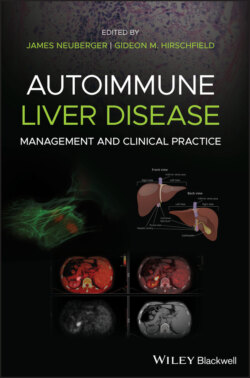Читать книгу Autoimmune Liver Disease - Группа авторов - Страница 72
Failure of Apoptosis to Conceal Autoantigens and Eliminate Autoreactive Cells
ОглавлениеApoptosis is normally an immunologically silent form of cell death [23]. Phagocytic removal of the corpse (efferocytosis) of apoptotic cells and blebs by APCs normally induces release of anti‐inflammatory molecules, inhibits NF‐κB stimulation of proinflammatory cytokines, and promotes secretion of anti‐inflammatory IL‐10 and TGF‐β. Failure of these normal APC mechanisms is an attractive hypothesis for the genesis of autoimmunity, because apoptotic blebs contain disproportionately high concentrations of known autoantigens. However, non‐apoptotic forms of cell death, such as necrosis or necroptosis, result in APC phagocytosis, processing and presentation of autoantigenic peptides to autoreactive T and B cells in immunogenetically susceptible persons. This is the proposed explanation for AIH after documented infections with hepatotrophic or other viruses causing hepatocyte necrosis. Defective apoptosis might also contribute to the persistence of autoreactive T and B cells in autoimmune diseases. Genetic defects in Fas (CD95), Fas‐L (CD95L) and RAS pathways cause lymphoproliferative disorders and autoimmunity due to inability to eliminate autoreactive effector cells.
